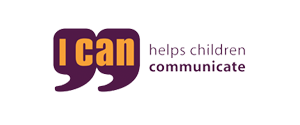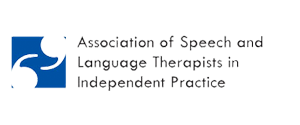Hoarse voice
Hoarse voice is the term used to describe an abnormal change in voice quality. Children with a hoarse voice may experience changes in pitch or volume. Different words are used to describe these changes including; rough, raspy, creaky, breathy. Hoarse voice can be caused by a variety of conditions.
Our speech and language therapists can assess your child’s voice quality and voice use to see what is causing the difficulty, as well as establishing how this impacts your child’s speech and communication abilities and home and school. Our speech and language therapists will then work with you and your child to create a therapy programme that improves your child’s difficulties. Speech and language therapy can be beneficial for children with hoarse voice and can improve a child’s vocal quality and help with management of vocal hygiene.
What is hoarse voice?
Hoarse voice is an impairment in voice quality and occurs when there is an abnormal change to the voice. The voice may be altered in pitch usually lower than usual and may be altered in volume if it becomes either louder or quieter than usual.
Hoarseness is due to something altering the vocal folds so that they are unable to vibrate against each other effectively. Our vocal folds need to be able to close fully and periodically in order for us to produce voice effectively.
Speech and language therapy assessments for hoarse voice
Assessment for voice disorders will include a detailed case history, this will involve questions regarding medical history, child's voice use in different environment and family history. This will help the speech therapist to discover the root cause of your child's hoarse voice.
Hoarse voice can most appropriately be described as a characteristic of dysphonia. Dysphonia is any change to the vocal quality leading to partial loss of voice. Our speech and language therapists will engage in play and different activities with your child, tailored to their age and interests. Throughout these activities, the speech therapist will listen closely to your child's vocal quality and how they use their voice.
The speech therapist will use the GRBAS scale to assess the severity of your child’s dysphonia. This will involve a rating for:
- Grade: The listener identifies the severity of the vocal disorder as a whole.
- Roughness: The irregularity in the vibrations of the vocal folds indicates the roughness of voice (hoarseness will most likely be assessed here).
- Breathiness: Audible turbulence as a hiss or breathing sound escaping from the vocal folds is assessed.
- Asthenia: This is vocal weakness or the loss of power in someone's voice.
- Strain: Vocal tension along with the pitch is assessed as strain.
Each of these aspects of voice will be assessed as individual characteristics. This will then point out the needs for the child and which aspect of voice may need treatment.
Yours and your child’s concerns and goals will also be discussed throughout assessment in order to create a programme tailored to specific goals and needs.
Speech and language therapy treatment for hoarse voice
Speech and language therapy can improve the vocal quality of a child who has hoarse voice.
Suitable therapy for children with hoarse voice include:
- Advice, training and strategies to parents, professionals and siblings
- Vocal hygiene techniques
- Individual therapy
- Group therapy
Benefits of speech and language therapy
Speech and language therapy can be of great benefit for children with hoarse voice, as it can improve children’s quality of voice as well increase the clarity of their speech making it easier for others to understand what the child is trying to say. Benefits of speech and language therapy for hoarse voice include:
- Increased intelligibility
- Reduced levels of frustration
- Increased levels of self-esteem and confidence
- Increased activity and participation
- Better quality of life
- Improved vocal quality
Our speech and language therapists can provide vocal hygiene therapy as well as voice exercises that can help your child. This can increase their participation in activities in school that requires speech.
Conditions associated with hoarse voice
Hoarse voice is usually caused by a primary condition. This is most commonly called dysphonia. Dysphonia can be caused by Voice disorders. It may also be caused by poor vocal hygiene, this may be from shouting or not drinking enough water.
Summary
Hoarse voice is an impairment in voice quality and occurs when there is an abnormal change to the voice. Our speech therapists can assess and treat any voice difficulties, including hoarse voice. This can have many benefits for your child, including improved vocal quality and self-esteem.
What to do next:
Our speech and language therapists will provide a comprehensive assessment and ongoing therapy for hoarse voice. If you think that your child has a hoarse voice or your child has been diagnosed with dysphonia please email office@sltforkids.co.uk or call 0330 088 2298.








